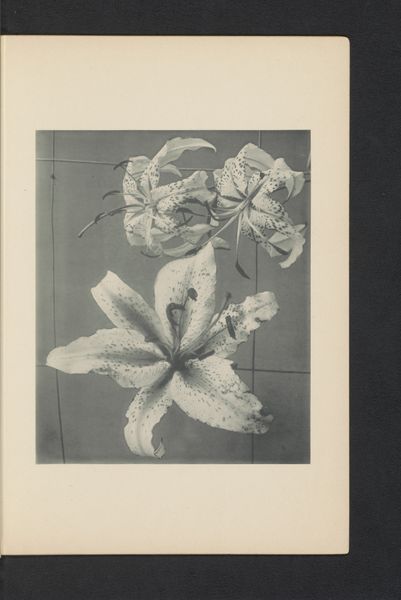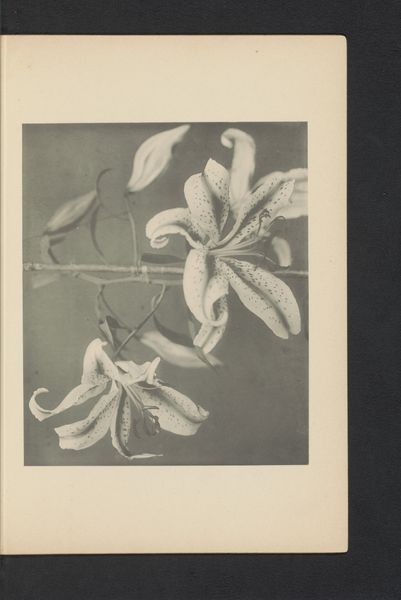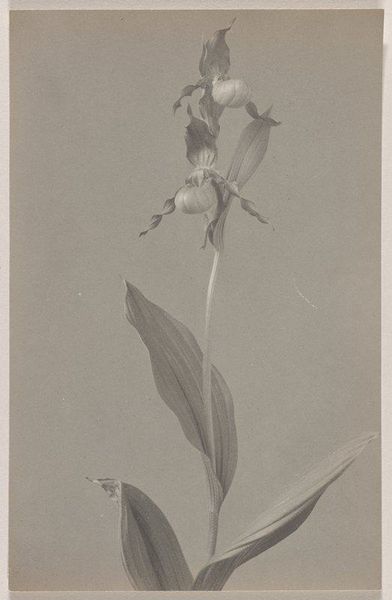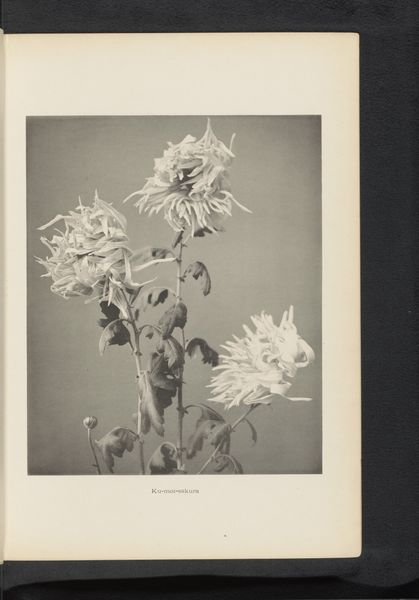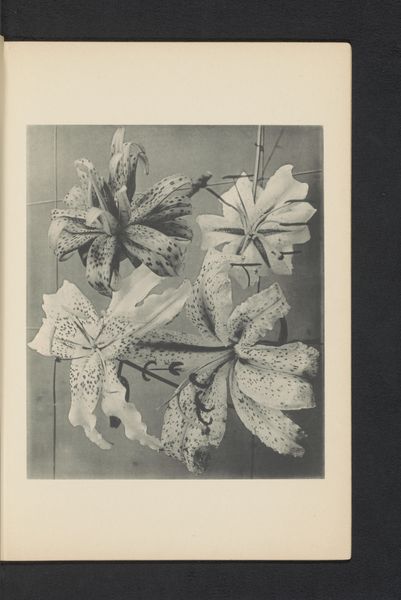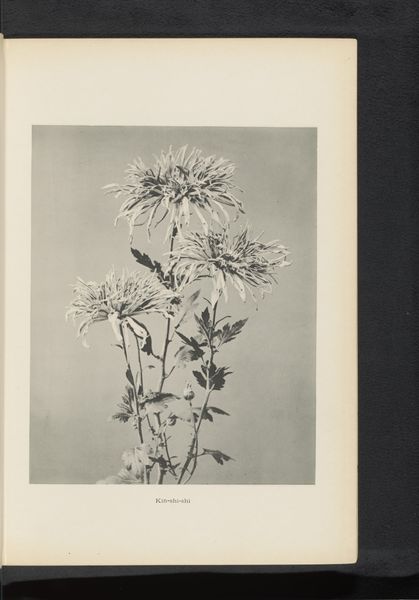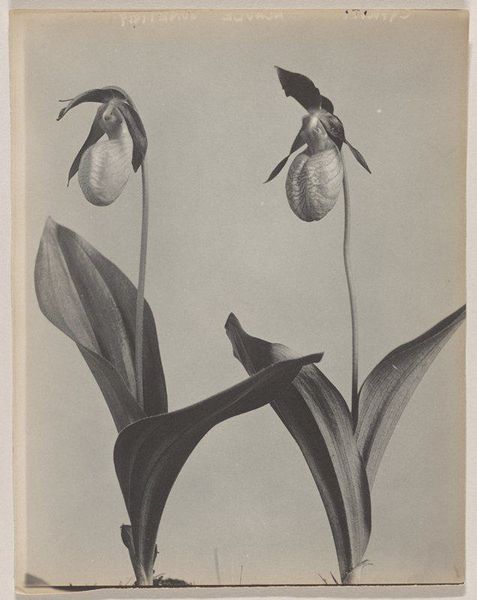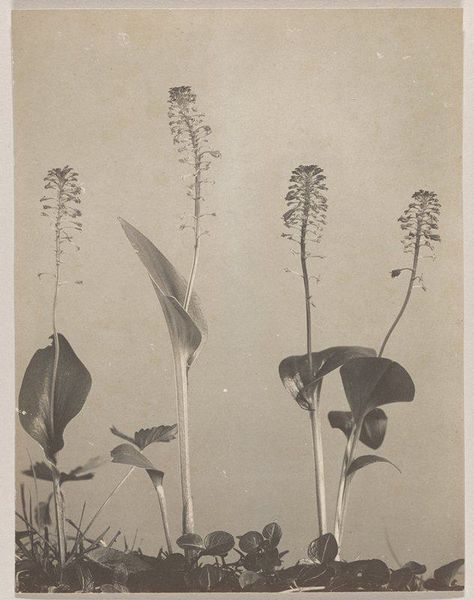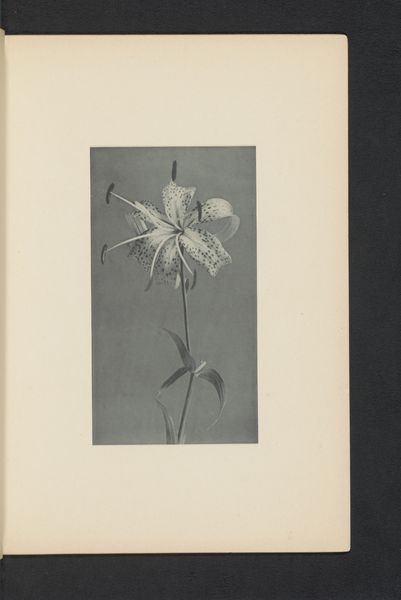
photography, gelatin-silver-print
#
aged paper
#
toned paper
#
pale palette
#
muted colour palette
#
pictorialism
#
sketch book
#
white palette
#
paper texture
#
photography
#
personal sketchbook
#
folded paper
#
gelatin-silver-print
#
sketchbook drawing
Dimensions: height 289 mm, width 227 mm
Copyright: Rijks Museum: Open Domain
Editor: Here we have "Japanse Lelie," a gelatin-silver print, pre-1895, by Kazumasa Ogawa. It's striking how the muted tones and soft focus give it this almost dreamlike quality, despite being a photograph. What's your interpretation? Curator: What I see is a deliberate engagement with Japonisme, a late 19th-century Western obsession with Japanese art and culture. Consider the title itself. The strategic framing and soft focus are typical of pictorialism, yes, but here, I see it acting as a commentary on cultural exchange. How does Ogawa, as a Japanese artist, negotiate the Western gaze through a lens of his own making? Editor: That's a great point! I hadn't thought about the artist's agency within Japonisme. It seemed like just another example of Western appropriation, but you are right; he's actively participating. Is the choice of the lily significant, or am I reading too much into that? Curator: No, it is astute. The lily itself, while beautiful, has various symbolic meanings across cultures. In some contexts, it represents purity; in others, death. Given Ogawa’s context, might he be playing with those established symbols, perhaps using them to express something about Japan's own complex relationship with the West during this period of rapid modernization and cultural negotiation? Editor: So, it is not *just* a beautiful photograph of a lily but also a multilayered statement about cultural identity and exchange, photographed through a consciously artistic lens. Curator: Exactly. It pushes us to reconsider how we frame cultural exchange, to move beyond a simplistic binary of " East meets West " and think more critically about agency, representation, and the complex negotiations of identity that happen through art. Editor: I will never look at a floral still-life the same way! Thank you; that gives me a much broader perspective. Curator: And I will remember to ask whose lens am I using.
Comments
No comments
Be the first to comment and join the conversation on the ultimate creative platform.
